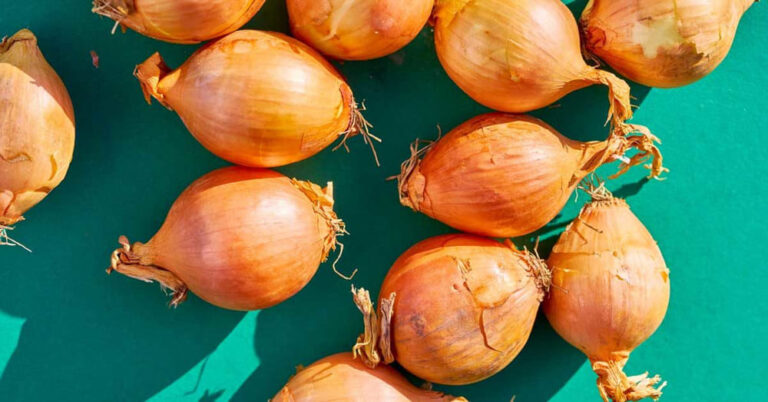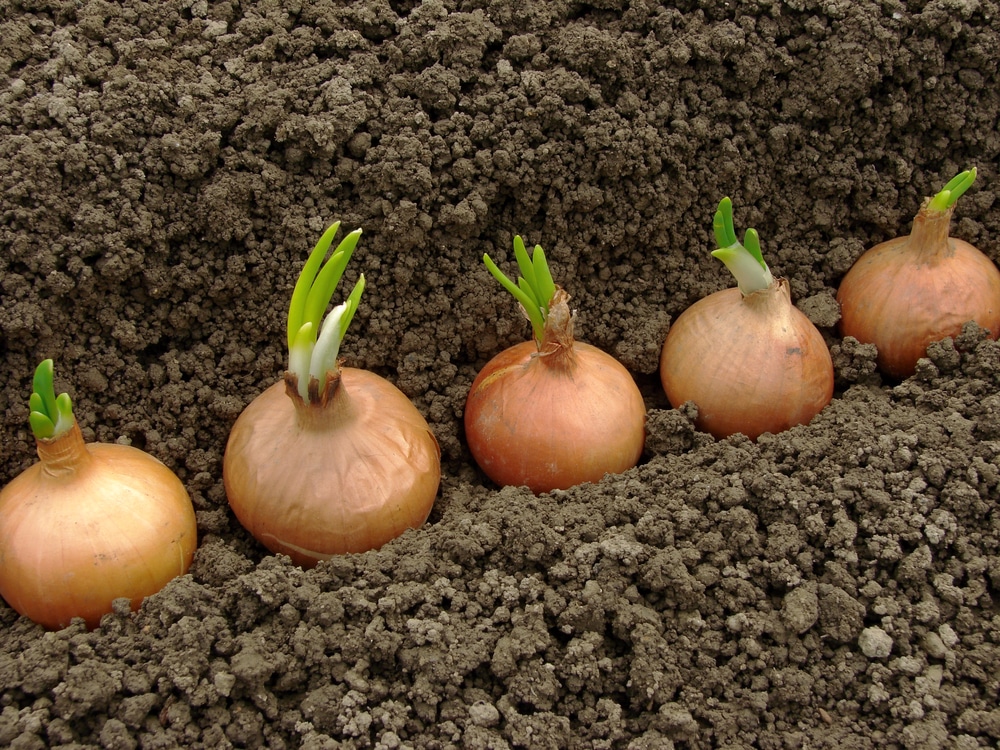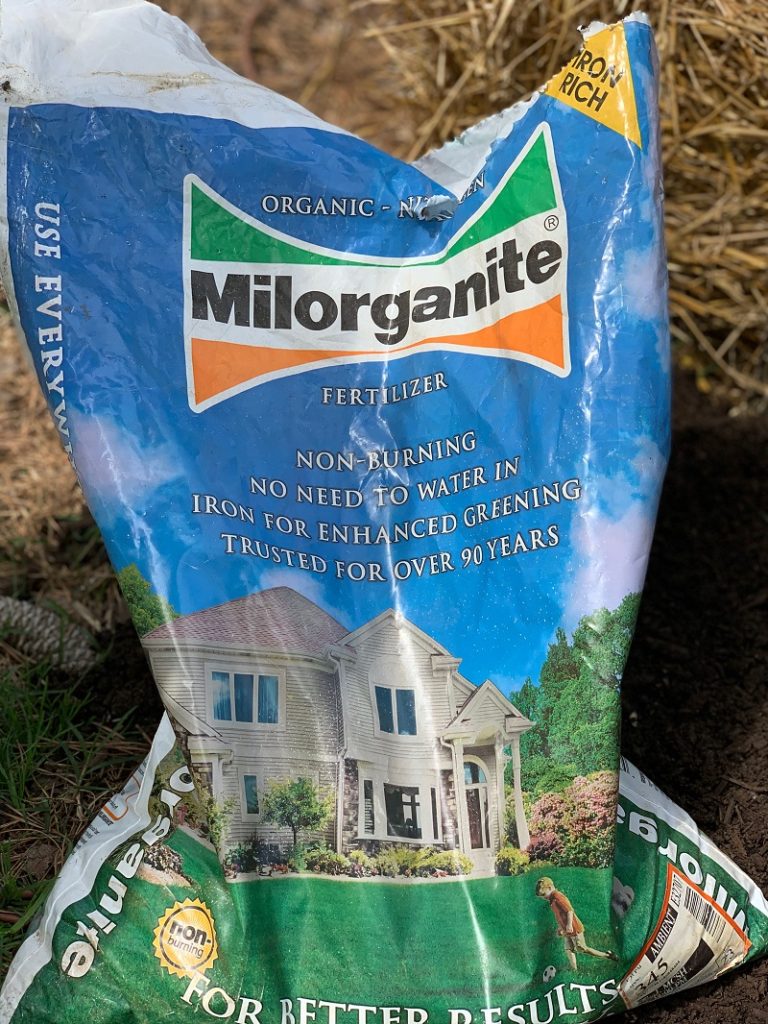Are onions staples in your kitchen? Do you want to grow more of them in your garden, like I do?
We currently have over 300 planted in our garden! After harvest, I store onions whole for a few months and then freeze and dehydrate the rest. Each year I have a goal to grow enough to last me until the next year. Although I haven’t achieved that goal quite yet, I get closer each season.
You make think since I have so many planted that growing onions is a no-brainer for me.
The truth is, onions are a little bit (ok a lot a bit) finicky. I plant so many because no season is the same, and in my Arkansas climate, roller coaster temperatures can cause major setbacks in the size of the bulbs.
But because I’m relentless in my pursuit of more and more onions, I have learned a lot about growing onions the last eight seasons, and I’ve definitely learned a lot of what not to do.
I dive into the details on our latest podcast. You can listen to that below or continue reading.
Listen, I’ve been there – staring disappointedly at tiny onion bulbs after months of waiting. As someone who’s grown over 300 onions each season, I totally get your frustration! After 8 years of growing onions in my garden, I’ve learned (often the hard way) why onions sometimes refuse to size up properly.
Let me break down the most common reasons your onions might be staying small, and more importantly – how to fix them!
1. You’re Growing the Wrong Type of Onions
This is probably the #1 reason for small onions! I made this mistake my first year too. Here’s the deal
- Short-day onions: Best for Southern regions
- Long-day onions: Ideal for Northern areas
- Intermediate-day onions: Work in middle latitudes
If you plant the wrong type for your latitude your onions won’t form proper bulbs. They’ll just give you glorified green onions instead of big bulbs. Check your latitude and pick the right variety – it makes all the difference!
2. Planting Sets vs. Transplants
Here’s something I learned after lots of trial and error
- Onion sets (those tiny bulbs): Often lead to smaller onions or just green onions in warmer regions
- Transplants (look like green onions): Usually produce bigger bulbs in most areas
But here’s the thing – what works best actually depends on where you live! Talk to local gardeners or your extension office to find out what works in your specific area.
3. Spacing Issues
Ya know what I figured out? Onions are kinda like teenagers – they need their space! Here’s what I do now:
- Plant transplants 6-8 inches apart
- Don’t crowd them – they’re competing for water and nutrients
- Thin out seedlings if needed
4. Feeding Problems
Onions are hungry little plants! They need:
- High nitrogen fertilizer
- Regular feeding throughout growing season
- Organic options like:
- Chicken manure
- Milorganite
- Corn gluten meal
5. Water Management Issues
Getting the water right is super important:
- Too little water = small bulbs
- Too much water = rot
- Aim for consistent moisture
- Use mulch to retain moisture
- Consider raised beds for better drainage
6. Not Enough Sunlight
I used to think onions could handle shade – boy was I wrong! They need:
- Full sun (at least 6 hours daily)
- No shade from taller plants
- Good air circulation
7. Weed Competition
Weeds are total bullies to onions! They:
- Steal nutrients
- Rob water
- Shade young plants
- Stunt growth
Solution: Mulch well and keep the area weed-free.
8. Temperature Problems
Onions are picky about temperature:
- Too hot = early bolting
- Too cold = slow growth
- Fluctuating temps = confused plants
Use mulch to regulate soil temperature and protect from extreme changes.
9. Poor Soil Preparation
Your soil needs to be:
- Well-draining
- Rich in organic matter
- Not compacted
- pH between 6.0-7.0
10. Wrong Planting Time
Timing is everything with onions:
- Plant too late = small bulbs
- Plant too early = bolting
- Follow your local planting calendar
- Start seeds 10-12 weeks before last frost
My Top Tips for Bigger Onions
- Choose the right variety for your region
- Prepare soil well before planting
- Space properly – don’t overcrowd
- Feed regularly throughout the season
- Water consistently but don’t overwater
- Mulch well for temperature and moisture control
- Keep weeds away religiously
- Provide full sun exposure
- Monitor for bolting signs
- Be patient – good size takes time!
Listen, growing big onions isn’t always easy – trust me, I know! But once you figure out what works in your garden, you’ll be harvesting beautiful bulbs in no time. Keep experimenting and don’t get discouraged if your first attempts aren’t perfect. We’re all learning here!
Have you had trouble with small onions? What’s worked (or hasn’t worked) for you? I’d love to hear about your experiences in the comments below!
Remember: Gardening is a journey, not a destination. Each season teaches us something new about growing better food for our families.
Want more gardening tips? Don’t forget to sign up for my newsletter where I share weekly updates and lessons learned from my garden to yours!
#GardeningTips #GrowingOnions #VegetableGarden #GardenProblems #OrganicGardening

Planting too large of transplants and sets
Once you know what type of onion to plant, let’s look at some other common mistakes in growing onions.
When you buy your transplants or sets from your local garden supply store or online (this is my favorite source for buying onions), there’s a natural tendency to pick the largest onions.
However, the ideal transplant size is the width of a pencil!

The same is true when it comes to onion sets. Separate your sets and save the biggest ones for green onions and your medium ones for larger bulbs.
The thorn in my side–growing onions from seed. This year I am hopeful, but up to this point, I’ve not been successful in growing onions from seed. One of the bigger mistakes when trying to grow from seed is that people wait too late to sow their seeds. This should be one of the very first crops you sow seeds for.
While northern gardeners who enjoy a long onion growing season into the summer will have more flexibility with this date, those of us in the South are on the clock since onions start bulbing sooner. Those onions need plenty of time to develop the greens that will nourish the bulbs. Because of that, we need to start our seeds about 10-12 weeks before the average last frost date.
Not feeding the onions enough
Onions are heavier feeders than you would think for such a small plant. Most reputable onion growers (including the farm where I buy my onion transplants) recommend high-nitrogen synthetic fertilizer. But as an organic gardener, I don’t put any synthetic fertilizer on my garden. This doesn’t mean that I can’t feed my soil and plants organically, though.

Good leaf growth is what feeds your bulbs when the plants switch to the bulbing process. I add Milorganite into the garden ahead of planting because it’s an organic option. In the fall or early spring, I may add chicken manure. I also sometimes add corn gluten meal to sprinkle around the plants. This offers both an extra dose of nitrogen and weed suppression.
Why Are Our Onions So Small?!
0
